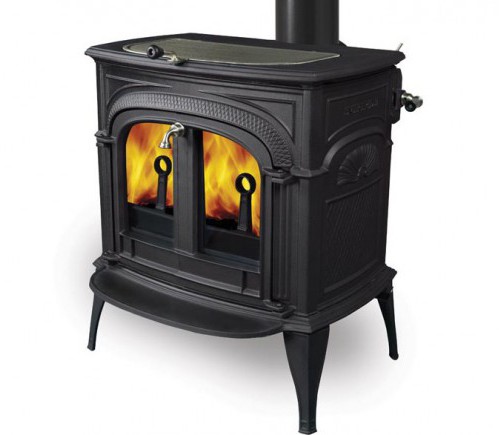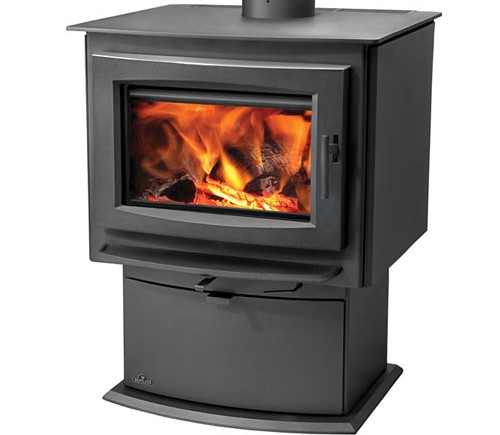Wood burning stoves just like any other type of stove is a free-standing appliance suitable for installation just about anywhere in the house as it doesn't require framing or finishing around it.
Manufacturer’s instructions determine how close a stove may be placed to combustible surfaces, such as adjacent walls, mantels, and surrounds. Wood stoves and pellet stoves require a non-combustible hearth pad or masonry floor, while some gas stoves do not have such a requirement.
Wood burning stoves can be constructed of steel, cast iron, and/or partially soapstone and can have a very traditional appearance or a modern look. They come in a variety of sizes, with log-holding capability and heating capacity being largely a function of the stove's size.
Wood Stoves are highly efficient wood burners and some models can be equipped with blowers.
A wood burning stove can be installed inside of existing fireplace to increase its efficiency. This type of use of a stove is very similar to that of a wood burning insert.

Wood burning stoves with possible venting diagrams courtesy of Napoleon
Notes on Venting of Wood Burning Stoves
All wood stoves require that the venting used vertically terminate. Wood stove venting can take turns to allow for better vent pipe concealment and use of space, but is highly dependent on a particular model of the stove, manufacturer's venting requirements and space where it is being installed.
Wood stoves can use different types of vent pipe (e.g. single wall, double wall or triple wall) made of different types of steel (e.g. black, galvanized or stainless) and diameters. Venting route and type is chosen depending on the particular stove model, customer's needs, budget (e.g. single wall pipe is less expensive than double or triple wall pipe), certain restrictions and manufacturer's specifications.
Sometimes the stoves are installed inside of existing masonry wood burning fireplaces. If that is the case, then stoves use a special adapter and a flexible venting liner that goes all the way up the existing chimney and terminates at its top.


